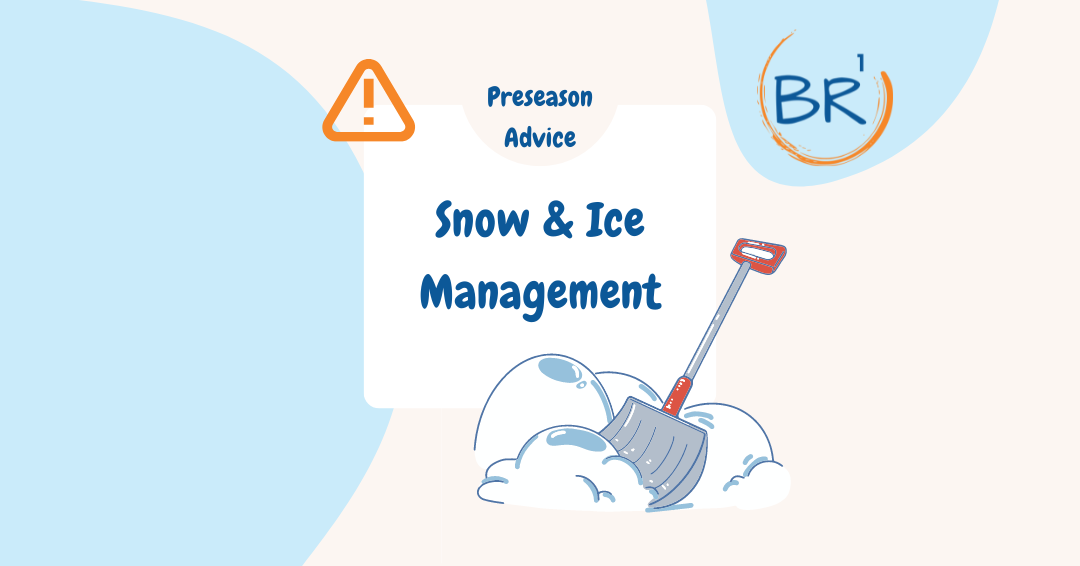Recruiting talent for snow and ice management is hard. Retaining that talent is even harder. Trying to profitably grow your business and deliver exceptional service while being short-staffed can seem impossible at times. Being short-staffed with no substantial relief in sight is miserable for business leaders and their teams. It’s often your existing employees who take the brunt of the pain through increased workload, longer hours, and lost opportunities for growth and advancement; which only adds to even more turnover. Being short-staffed is frustrating and challenging, but it’s not inevitable, and doesn’t have to be permanent.
Proclaiming that nobody wants to work and today’s workforce is lazy does nothing to overcome the challenge. And, the challenge is absolutely real. We shouldn’t forget what we’re really asking from the labor market. Job seekers are obviously not attracted to manual labor like they once were. Snow and ice professionals are typically required to be on-call around the clock, accept inconsistent hours and pay, and work in extreme winter weather. Snow and ice management employers are asking a lot from the labor market, in an age where workers have an abundance of options. Acknowledging this is necessary in the process of creating strategy to overcome this challenge. I firmly believe this challenge can not only be overcome, but by doing so, an organization can gain a significant unfair advantage in their market.
Improve the candidate experience
Make it easy to apply for a position at your company. Don’t confuse this with making rushed hiring decisions, especially out of a position of desperation. This doesn’t contradict the wise notion of cautiously and carefully hiring. What I’m talking about here is simply making it easy for your candidates to apply and initiate the conversation. This is especially and understandably difficult for HR professionals, who can be a little… overly excited… to mitigate liability and get tremendous amounts of electronic or conventional paperwork completed. To my hard working friends in HR, don’t hate me and don’t stop reading. We’re not going to abolish all of the textbook rules and best practices. I just want us to delay some of this for a little while.
Candidates don’t want to fill out a copious amount of electronic or conventional paperwork before they’ve even decided if they want to work with you. Much of this can come later in the process, affording candidates the opportunity to connect without becoming exhausted, or more likely, aborting the application process all together. I realize HR folks and hiring managers need a certain amount of information to make an informed decision on whether to interview a candidate or not; but I suggest limiting this to as specific and minimal as possible. A resume or application, along with a very brief questionnaire (1-6 questions max) is usually suffice.
Remember, the employee experience starts long before someone actually becomes an employee. And, your reputation as an employer is decided not only by those you actually hire, but by each and every person who is exposed to your employer brand. The candidate experience is critical, and presents a tremendous ripple effect. Employers wanting to win in the talent market should be putting as much thought and effort into how they represent their brand to employee candidates as they do customer prospects.
Another way employers accidentally self-sabotage the candidate experience is by showing up late or unprepared for the interview. The application and consideration process is a great time to set the tone for what it’s going to be like working at your company. Regardless if you’re meeting by video, or in-person, look and act professional, show up on time, and come well-prepared to have a productive conversation. And, if you are meeting by video, make sure your technology is working properly before the scheduled time. Fumbling through Zoom or Teams settings isn’t the end of the world, but it’s certainly not putting your best foot forward. Just like you, candidates have an important decision to make, and the impression you make matters.
Be forthright
I’m not opposed to hiring and training unexperienced talent; and this is quite prevalent in the snow and ice management industry, especially with sidewalk crews. One of the major reasons these new hires don’t work out is because they don’t completely know what they’re getting themselves into. What seems obvious to someone with experience usually isn’t to a newbie. What’s asked of snow and ice management professionals is almost certainly different than anything they’ve experienced before. This is not the time to rely on what you believe should be common sense.
Explain how to dress and what coming to work prepared for snow and ice management looks like. Dressing properly is critical. Make sure you explain the importance of waterproof items, and not just clothing for warmth. Make sure the new hire understand what you are providing and what they’re responsible for.
Explain what on-call really means. Make sure they understand what a tremendous commitment this is. Do they understand that quite often this work is completed in the middle of the night? Do they know that snow and ice management is an essential service that must be completed, even if it snows on Christmas, New Year's Day, and during the Super Bowl? If your company provides near-zero-tolerance service, make sure they understand that the slightest dusting, refreeze, or minor icing results in a salt run.
Explain honestly what the new hire should expect in terms of schedule. I’ve seen and heard countless stories of new snow fighters quitting mid-season because they couldn’t afford to live off inconsistent hours. If your company doesn’t provide full-time work in the winter, explain this in great detail. Explain that there could be very long shifts. What type of impact will that have on their family? Pay could be inconsistent just like the weather. How are they going to get through the winter if it doesn’t snow a lot? Yes, you want to sell your company, opportunities, and how rewarding the industry can be, but in the interest of reducing turnover, I strongly suggest you also adequately explain the challenges that come with a career in the snow and ice management industry.
Create significance
There’s a big psychological difference between working as a sidewalk shoveler and a sidewalk safety technician. If you title and treat people like laborers and plow drivers, expect that level of commitment and performance. Many business leaders will say titles don’t matter, but in the context of establishing a sense of significance, I’d argue they do. Titles can trigger a major paradigm shift in how someone thinks and acts in the role they play, and their perceived significance of that role. With that said, I’m not going to try to convince you that more meaningful titles alone will make a massive difference in attracting and retaining talent, or improving production performance - it won’t. We have to go further.
There’s an opportunity to stand out to better and more career minded candidates by generating a sense of significance. This should start during the recruiting process, be driven home during the interview and onboarding, and trained and reenforced throughout employment. If you want to attract better talent, make sure job seekers understand the importance of the service they’ll be providing. This is something that should also be continuously trained and reinforced with existing employees, and shouldn’t be limited to only those more senior level team members.
Talk about how legal liability works in the snow and ice management industry. You’re not just plowing, clearing walkways, and deicing; you’re mitigating your company’s and the client’s liability risk.
Talk about the importance of keeping businesses open and running. Retail businesses can continue to generate revenue, restaurants can continue to service food and beverages, office workers can get in and out of their buildings safely, and hospitals and doctor offices can treat patients because of your service. It’s quite incredible that the service this industry provides makes it possible for first responders to reach those in need, and makes it possible for a life saving surgeon to get out of their subdivision and to work. The snow fighter’s impact on a community’s health, safety, and economy can’t be overstated.
If you want to recruit better and retain more of the right people, do everything you can to make sure it’s understood how significant the role they play is. Team members who feel significant will also outperform those just doing a job.

.png)


